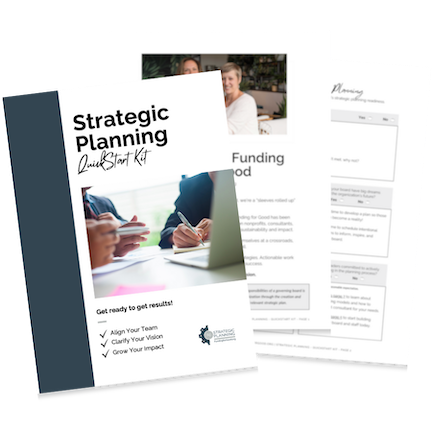Recently we shared a blog that focused on planning for staff transitions. This blog will cover the 8 point checklist for effective staff transitions.
8 ways that your organization should be prepared to have effective staff transitions once they become a reality!
First it is important to assess whether the staff turnover should be considered “hostile” or “friendly” so that you better understand and are equipped to minimize potential negative impact of the transition. Having effective staff transitions are important in both cases.
If an employee is being fired, laid off, or is quitting on bad terms, the transition might be considered “hostile” and extra measures should need to be implemented before, during, and after the transition. Even when effective staff transitions are considered “friendly,” it is important the organization follow specific policies and ensure that specific details on a “transition checklist” have been completed to ensure that fellow co-workers, clients, and the community do not suffer negative impact.
Basic Transitions in Employment
1. Receive notice of resignation or provide termination letter to current employee and inform management/board of directors.
It is critical to receive or provide notice in a signed/written document! This document should at a bare minimum include the motive for leaving/firing/layoff, last date of employment, key items for discussion/completion, the date of submission and a signature. While a series of conversations might proceed or follow the official written notice, the written document assures that the staff and employer are aware of key transition details. Written documentation also ensures that your organization can more readily respond to follow-up questions, unemployment claims, or legal processes if needed.
2. Complete an exit interview.
Whether a staff transition is friendly or hostile, it is important to evaluate staff performance, the organization’s response, establish guidelines/responsibilities for a transition period, confirm the final date of employment and provide a written agreement outlining payment for services if applicable. While a disgruntled employee may have a lot of negative things to say about fellow co-workers or supervisors, exit interviews offer management a glimpse inside the workplace as well as staffing trends
3. Recover company-owned property.
Intellectual property is just as important if not MORE important than physical property! A cell phone or laptop can easily be replaced, but if an employee takes program files, contact lists, key contracts, and other vital information with them…it could cost the organization months or even years to rebuild those resources.
That being said, if the employee has a car, a phone, program materials, tools or other equipment, be certain to plan for the return of it prior to the employee’s final departure.
4. Eliminate security access.
If the employee has access to password-protected websites or any confidential company information, cut-off the employee’s access to reduce the risk of the unauthorized capture of information. Also, be sure to remove the individual as an authorized decision maker on all accounts. This could include website domain, facility contracts, bank signature card, bookkeeping software, phone/internet accounts, PO Box contracts, security/alarm systems, social media, online calendars, your donor database, and more!
5. Pay the final paycheck.
Most state laws require an employee to pay the final paycheck by the same date paychecks are regularly issued, and an organization can be penalized for non-compliance. Be sure to distribute the final paycheck on the same date as the normal payroll period. If there are questions related to addition or deduction of wages owed, provide a written statement from the organization’s senior officer stating what the confusion involves, what course of action the organization is taking to resolve the issue, and when final pay will be issued.
Accrued vacation time, flex hours, paid time off and other factors might require consideration, but it is important that the organization work speedily to issue final payment for all services the employment has rendered as well as any benefits that were agreed upon by both parties at a prior date. Cover all your bases and confirm in writing via email how the employee would like to receive their final check. If they request that payroll is mailed, be sure to confirm the mailing address and send the check via certified mail!
6. Remove employee as a point of contact.
Employees should be removed as the point of contact as quickly as possible to avoid missed emails, calls, and other key communication. If it is a friendly transition, it is helpful to have the staff member introduce key partners/vendors/community members with the organization’s new point of contact. Also, it is helpful to have all emails forwarded to program supervisors and set up an auto-reply message on the staff member’s email/voicemail directing the community to new contacts.
7. Establish New/Replacement Point of Contact for the Organization.
It is important to let the community know if you have hired or intend to hire new staff to replace the transitioning employee. If the position will be vacant for an undetermined period, ensure that a specific person (staff, board, or volunteer) is assigned responsibility and is aware of key details and is equipped to respond to community requests.
8. Keep the Community Informed.
Non-profit organizations tend to live in a state of transition whether changes are on the board, fundraising efforts, events, programs, partnerships, or staffing. The community cannot step up to offer support if they do not know what is happening! We all know that nature abhors a vacuum. When the organization does not control the narrative and leaves the community questioning “What is going on over there?” gossip and misinformation tend to fill that void!
Good news or bad…keep clients, stakeholders, and community partners informed of all organizational changes. That is important when it comes to effective staff transitions. You never know who might step up as a volunteer or refer an amazing candidate to fill your newly vacant staff position!
- Quick Tips for Smooth Staff Transitions BEFORE They Happen
- Succession and Transition Planning Quick Tips



